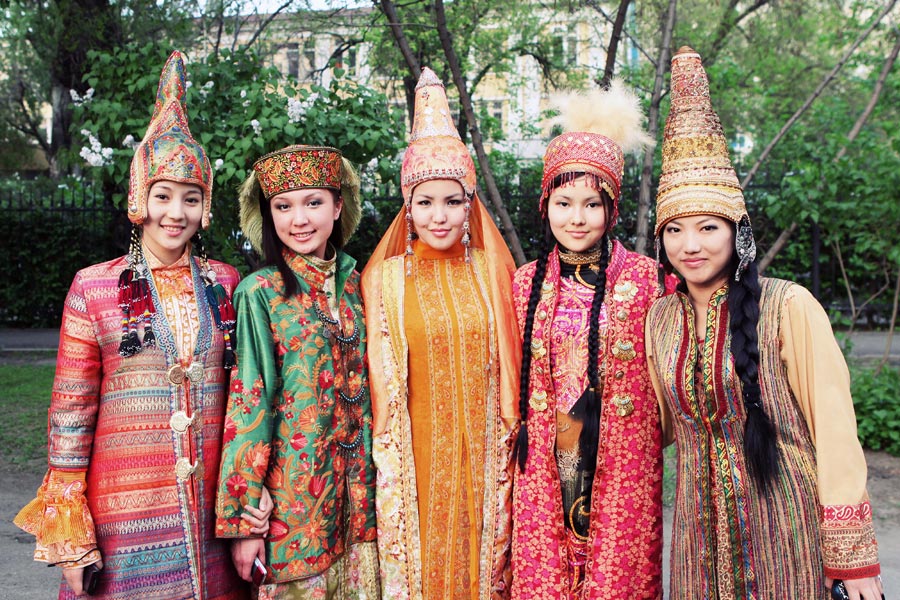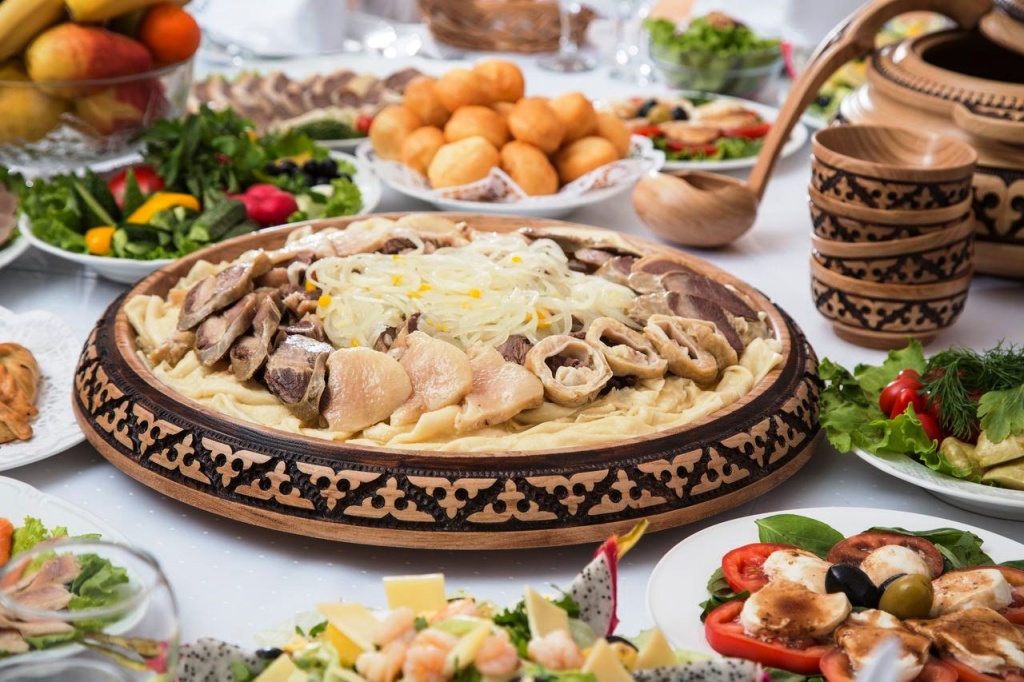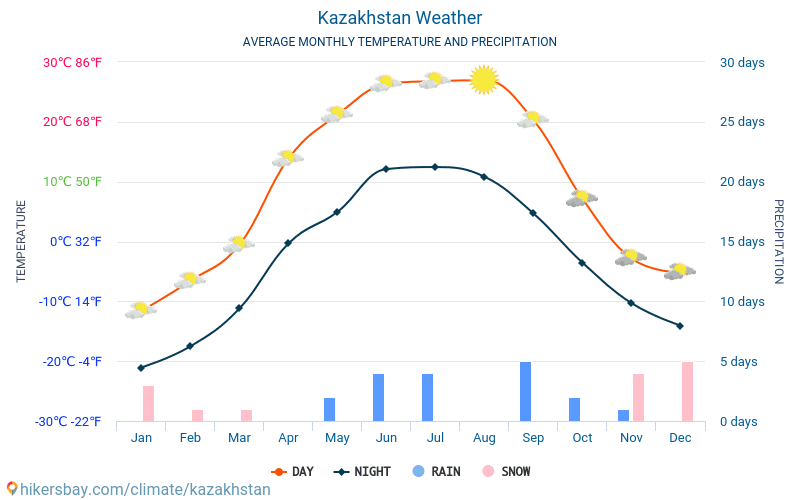Kazakhstan, a Central Asian country and former Soviet republic, extends from the Caspian Sea in the west to the Altai Mountains at its eastern border with China and Russia. Its largest metropolis, Almaty, is a long-standing trading hub whose landmarks include Ascension Cathedral, a tsarist-era Russian Orthodox church, and the Central State Museum of Kazakhstan, displaying thousands of Kazakh artifacts.
About Ukraine
is a sovereign state in Eastern Europe, bordered by Russia to the east and northeast, Belarus to the northwest, Poland and Slovakia to the west, Hungary, Romania, and Moldova to the southwest, and the Black Sea and Sea of Azov to the south and southeast, respectively. Ukraine is currently in territorial dispute with Russia over the Crimean Peninsula which Russia annexed in 2014 but which Ukraine and most of the international community recognise as Ukrainian. Including Crimea, Ukraine has an area of 603,628 km2 (233,062 sq mi), making it the largest country entirely within Europe and the 46th largest country in the world.
It is known for its Orthodox churches, Black Sea coastline and forested mountains. Its capital, Kiev, features the gold-domed St. Sophia's Cathedral, with 11th-century mosaics and frescoes. Overlooking the Dnieper River is the Kiev Pechersk Lavra monastery complex, a Christian pilgrimage site housing Scythian tomb relics and catacombs containing mummified Orthodox monks.
Currency
The Kazakhstan tenge (KZT) is the national currency of Kazakhstan. It was introduced in 1993, replacing the Russian ruble.
Climate
Flat or rolling terrain predominates throughout much of Kazakhstan, with lowlands accounting for one third of the country’s total area and low mountains a further fifth. The exceptions to this topography are the very low-lying areas by the Caspian Sea in the west, and Altay mountains that reach altitudes of 7,000 meters (m) on the eastern border with China and Kyrgyzstan. Kazakhstan experiences an extreme continental climate, with long, hot summers and cold winters. Winter in the north of the country is long and cold – in some years the temperatures reached - 52°C (Nur-Sultan), but there are also thaws up to 5°C. The shortest season in the north is spring, which lasts 1.5 months, while summer lasts 3 months and winter extends from October to April. Snow primarily falls in November but can continue through April.
Due to its great distance from the ocean, Kazakhstan has a highly continental climate and large intraday and annual fluctuations in temperature. This means that temperatures in the winter months (December to February) are extremely cold, with national averages between -9°C and -12°C, whereas summers are hot, with average temperatures of 22°C to 23°C in June, July and August. Precipitation is low throughout the year, with average monthly levels of between 14 millimeters (mm) and 30 mm, although flooding can occur during spring due to increased rain and the thawing of winter snow.
Temperatures throughout the year vary with latitude in Kazakhstan, with northern areas experiencing much colder winter temperatures than southern areas, and southern areas relatively hot summers. This means that in January and February temperatures in the capital (Nur-Sultan, in the north of the country) can fall to -16°C, while in the most populous city (Almaty, in the southeast) average temperatures remain above -7°C. Similarly, the average temperature in July can vary from 20°C in parts of the north and northeast to 29°C in southern areas near the border with Uzbekistan. Levels of precipitation can vary significantly between climate zones. Desert areas, such as the central Betpak Dala desert and the southern Kyzylkum desert, receive only 100-200 mm of precipitation per annum, whereas steppe areas receive 200-500 mm per year. Precipitation in the foothills and mountains vary between 500 and 1,600 mm per annum.
Kazakhstan’s economy and society have undergone deep transformations since the country declared independence in 1991. Kazakhstan’s growth performance since 2000 has been impressive, averaging almost 8% per annum in real terms and leading to job creation and progress in the well-being of its citizens. Extractive industries play an important role in the dynamism of the economy, but sources of growth beyond natural resource sectors remain underexploited. In the social arena, dimensions of well-being beyond incomes and jobs have not kept pace with economic growth.
Kazakhstan has set itself the goal of becoming one of the 30 most developed countries in the world by 2050. To sustain rapid, inclusive and sustainable growth and social progress, Kazakhstan will need to overcome a number of significant challenges. Natural-resource dependency, the concentration of economic clout and a fragile and underdeveloped financial sector limit diversification and economic dynamism. Widespread corruption still affects multiple state functions, undermines the business environment, meritocracy and entrepreneurial spirit. More generally, the state has limited capacity to fulfil some of its functions, which affects the delivery of public services like health and education, as well as the protection of the environment and the generation of skills.
Education
Primary Education
Schooling is mandatory in Kazakhstan and this reflects in a national literacy rate of over 99%. The 5 grades of primary school begin at age 6. Two groups of children attend morning and afternoon shifts respectively per school, in order to share facilities. The ministry of education prescribes the curriculum, and this applies to both private and public schools.
Middle Education
Students continue with their education program at lower secondary school for 4 years through to grade 9. A general academic curriculum includes Russian or Kazach depending on location, plus biology, chemistry, history, mathematics, physics, and a foreign language.
Secondary Education
There are three options for the concluding 3 years at secondary school. These include general education at a lyceum or gymnasium, vocational education at a professional lyceum or vocational school, and professional education at a professional college. Education costs continue to be largely funded by the state.
Vocational Education
An ad-hoc training company is being established to oversee the development of vocational training in Kazakhstan through an unfolding network of institutions to complement current structures. It is intended that this become a kingpin in the nation’s emerging industrialization program.
Tertiary Education
A variety of tertiary institutions attend to Kazakhstan’s higher education needs, including universities, academies, institutes, higher schools and colleges, and conservatories. Secondary school teachers complete 5-year specialist diplomas at university too. The nations 2 top universities are al-Farabi Kazakh National University in Almaty and Eurasian National University located in Astana. Of these, the former is the oldest, having been originally established in 1933 under a different name. It has over 20,000 enrolled students supported by 2,500 faculty staff, and has embarked on an ambitious expansion program.
Culture
Kazakhstan has a well-articulated culture based on the nomadic pastoral economy of the inhabitants. Islam was introduced to Kazakhstan in the 7th to 12th centuries. Besides lamb, many other traditional foods retain symbolic value in Kazakh culture. Kazakh culture is largely influenced by the Turkic nomadic lifestyle.

Health
The Healthcare in Kazakhstan is a post-Soviet healthcare system under reform. The World Health Organization (WHO), in 2000, ranked the Kazakhstani healthcare system as the 64th in overall performance, and 135th by overall level of health (among 191 member nations included in the study).
Salamatty Kazakhstan is the State Healthcare Development Programme.
The Human Rights Measurement Initiative finds that Kazakhstan is fulfilling 79.7% of what it should be fulfilling for the right to health based on its level of income. When looking at the right to health with respect to children, Kazakhstan achieves 96.1% of what is expected based on its current income. In regards to the right to health amongst the adult population, the country achieves only 80.9% of what is expected based on the nation's level of income. Kazakhstan falls into the "very bad" category when evaluating the right to reproductive health because the nation is fulfilling only 62.1% of what the nation is expected to achieve based on the resources (income) it has available.

Cuisine
Traditional Kazakh foods reflect the nomadic peoples and also Middle Eastern influences. Horsemeat and mutton are the most common foods. Middle Eastern methods of preparing and seasoning rice, vegetables, kebabs (skewered meat), and yogurt have been added.
















